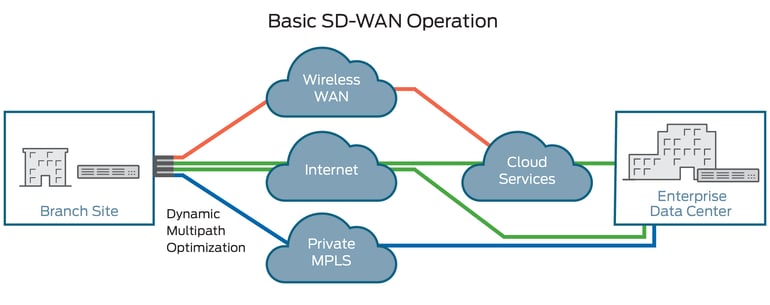Software Defined - WAN
Instead of hardware, a software-defined wide area network (SD-WAN) uses software and virtual network overlays to take advantage of available WAN connections to connect your enterprise networks over multiple sites in different locations.

If your organization has multiple branch locations or a large number of mobile workers using different devices to access the network, you should be thinking seriously about transitioning to SD-WAN if you aren’t already. Flexibility and cost control are key business drivers.
The largest expense for any WAN infrastructure are circuit and service costs.
SD-WAN manages your available network routes that deliver an application’s required quality of service. When cheaper Internet links are available, more traffic will shift onto them and off more expensive MPLS links, which can then be reduced or eliminated.
Benefits of SD-WAN
Companies are rapidly adopting SD-WAN technology because of the comprehensive financial and operational benefits it offers:
- Lowers WAN OpEx and CapEx costs, and overall total cost of ownership
- Provides greater business agility and responsiveness to keep pace with IT innovations
- Supports multiple, secure, high-performance connections eliminating backhaul penalties imposed by MPLS networks
- Allows for load sharing across connections and adjusts traffic flows based on network conditions to improve performance
- Supports the automated provisioning of – and changes to – premium network services, such as VPNs, firewalls, security, WAN optimization, and application delivery control
- Supports zero-touch provisioning (ZTP)
- Improves network security by encrypting WAN traffic and segmenting the network to minimize damage if breaches occur




